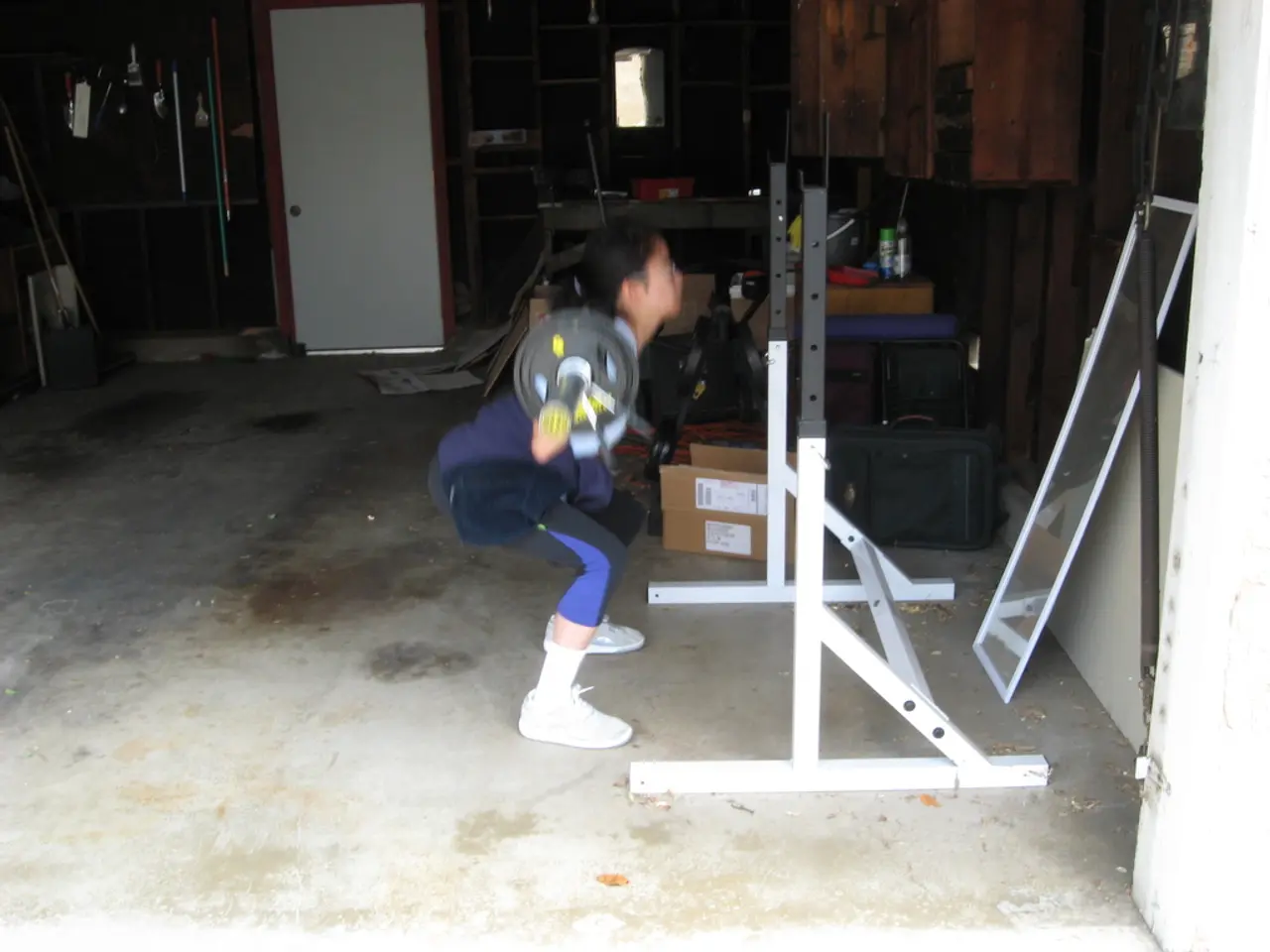Backbending: Understanding its Advantages, Disadvantages, and Further Details
In the world of yoga, Pilates, and fitness, the importance of maintaining a healthy and balanced spine cannot be overstated. While back arching may seem like a simple movement, it's crucial to understand its implications and perform it correctly to avoid potential risks.
Firstly, it's essential to comprehend the natural curve of the spine. The upper half of the spine naturally curves inward, while the lower half, known as the lumbar area, curves outward. This curvature is designed to absorb shock and distribute weight evenly.
However, excessive arching can affect gait and balance, potentially leading to discomfort or injury. Chronic pain sufferers may find that excessive or uncontrolled back arching can worsen their symptoms. Aggressive back arching may also stress the spinal discs and joints, potentially causing discomfort or injury.
To safely perform physical activities like yoga and Pilates while avoiding the risks of excessive back arching, it is essential to engage the core muscles, maintain proper spinal alignment, and move with controlled, vertebrae-by-vertebrae spinal mobilization rather than overarching through the back.
Here are some key recommendations:
- Engage your core and slightly tuck the pelvis during poses that risk back arching to prevent excessive lumbar extension and reduce stress on the lower back.
- Perform spinal movements with mindful control, such as rolling up/down vertebra by vertebra, to avoid collapsing or overarching the lower spine.
- Use gentle flexion and extension stretches like cat-cow in yoga and Pilates to warm up the spine and increase mobility with low risk.
- Keep a neutral or slightly elongated spine by lengthening through the crown of the head and sitting tall, especially during seated twists and standing poses.
- Avoid hyperextension postures or locking knees/hips, and distribute weight evenly across feet and pelvis.
- If using props like cushions or blankets for support, use them for gradual lengthening rather than forcing a deep arch.
- Ensure correct form with core engagement and pelvis stability when using exercise machines or performing strength exercises.
By prioritizing spinal integrity, controlled movement, and core activation, you minimize risks associated with excessive back arching in yoga, Pilates, and fitness activities.
Controlled back arching can promote spinal health by encouraging the spine's natural curves and preventing excessive stiffness or rigidity. It can also strengthen the core muscles, improving posture and overall body strength. However, excessive or improper back arching can lead to overexertion and muscle strain.
In disciplines such as yoga and Pilates, some postures include back arching to help increase flexibility, enhance core strength, and improve overall body awareness. In fitness routines, back arching can help target specific muscle groups, improve flexibility, and promote spinal health.
However, it's important to note that certain types of back arching movements can exacerbate medical conditions, such as herniated discs or spondylolisthesis. Individuals who are pregnant or carrying excess weight may arch their back to help with balance or compensate for weak core muscles.
Briefly arching the back during physical activity has no negative health consequences. However, deliberately arching the back for prolonged periods can lead to discomfort or muscle loss.
In conclusion, understanding the importance of proper back arching and spinal alignment is crucial for maintaining a healthy spine and avoiding potential injuries. By following the key recommendations outlined above, you can safely and effectively incorporate back arching into your yoga, Pilates, and fitness routines.
While it's important to note that brief back arching during physical activities like yoga and Pilates can strengthen the core muscles and encourage the spine's natural curves, excessive or improper back arching can lead to overexertion and muscle strain. In health-and-wellness and science communities, there's a growing emphasis on the significance of maintaining proper spinal alignment, particularly in activities such as fitness-and-exercise and yoga, to ensure musclepain is minimized and injury is avoided.




